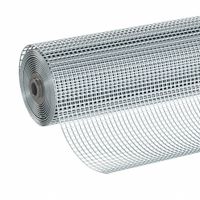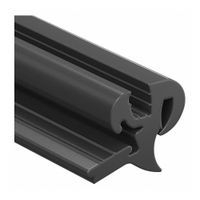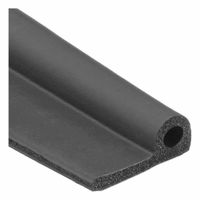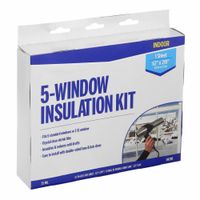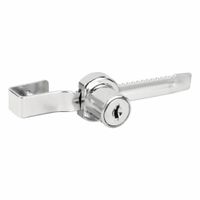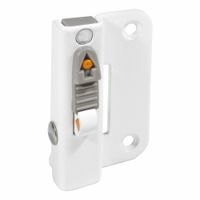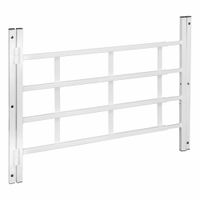Call +(254) 703 030 000 / 751 483 999 / 721 704 777
.....Read More
Frequently Asked Questions
What are the best materials for window hardware to prevent intruders?
For preventing intruders, durable and robust materials are crucial for window hardware. Steel, a high-strength alloy, is an excellent choice for components like hinges, latches, and locks due to its inherent resistance to prying, cutting, and forced entry. Similarly, brass, particularly solid brass, offers good strength and corrosion resistance, making it suitable for decorative but still functional hardware.
Another strong contender is hardened aluminum, which combines lightness with considerable strength when properly reinforced. For more advanced security, consider hardware incorporating materials like zinc alloys, which offer a balance of strength and cost-effectiveness for certain components. The design of the hardware is as important as the material; for instance, multi-point locking systems and reinforced strike plates significantly enhance security, regardless of the material. Ultimately, a combination of strong materials and intelligent design provides the most effective deterrent against intruders.
How do window replacement screens keep pests out?
Window replacement screens act as a physical barrier, effectively blocking insects, rodents, and other unwanted pests from entering your home while still allowing for ventilation. The mesh of the screen is fine enough to prevent even small insects like mosquitoes and gnats from passing through, yet it's designed to allow air circulation. These screens are typically made from durable materials like fiberglass, aluminum, or stainless steel, which are resistant to tearing and corrosion, ensuring their long-term effectiveness. The precise fit of replacement screens is crucial; they are custom-measured and installed to ensure there are no gaps or openings around the edges that pests could exploit. Additionally, some screens may be treated with insect-repellent coatings for an extra layer of protection. This combination of a physical barrier, fine mesh, durable materials, and a precise fit is what makes window replacement screens highly effective at keeping pests out of your home.
What are rubber locking gaskets used for in window installations?
Rubber locking gaskets are essential components in window installations, primarily used to create a secure, weather-tight seal between the glass pane and the window frame. They are typically made from durable, flexible rubber or EPDM (ethylene propylene diene monomer) and are designed with a specific profile that allows them to be compressed and locked into place.
Their main function is to prevent water, air, and dust infiltration, which is crucial for maintaining the energy efficiency of a building and protecting the interior from environmental elements. The locking mechanism, often achieved with a separate "locking strip" or "zipper" inserted into a channel within the gasket, applies continuous pressure, ensuring a firm grip on both the glass and the frame. This not only enhances the seal but also provides structural stability to the glazing.
Beyond weatherproofing, these gaskets also offer thermal insulation, reducing heat transfer through the window. They can absorb vibrations, contributing to sound insulation and preventing glass breakage due to thermal expansion or building movement. Their resistance to UV radiation, extreme temperatures, and various chemicals ensures a long-lasting and reliable seal, making them a preferred choice for many modern window systems, especially in commercial and automotive applications.
How can window and door seals improve energy efficiency?
Window and door seals, also known as weatherstripping, play a crucial role in improving energy efficiency by creating a barrier against air leakage. Over time, gaps can form around windows and doors due to settling, temperature changes, or wear and tear on existing seals. These gaps allow conditioned air (heated in winter, cooled in summer) to escape and unconditioned outside air to enter your home.
When air leaks occur, your HVAC system has to work harder and longer to maintain a comfortable indoor temperature, leading to increased energy consumption and higher utility bills. By installing or replacing effective seals, you can:1. **Prevent drafts:** Seals block cold drafts in winter and hot drafts in summer, making your home feel more comfortable without constantly adjusting the thermostat.
2. **Reduce heat transfer:** While seals primarily stop air movement, they also offer a minor insulating effect that can help reduce heat transfer through conduction.
3. **Maintain indoor air quality:** By minimizing air exchange with the outside, seals can help reduce the entry of dust, pollen, and other allergens, contributing to better indoor air quality.
4. **Lower energy bills:** The most significant benefit is the reduction in energy waste, which translates directly to savings on your heating and cooling costs.Common types of seals include foam, rubber, vinyl, and felt, each offering different levels of durability and effectiveness. Properly installed, they form a tight barrier that significantly reduces the amount of air that can pass through the perimeter of your windows and doors, making your home more energy-efficient and comfortable.
What are the benefits of using window insulation kits in winter?
Window insulation kits offer several benefits for winter, primarily by improving energy efficiency and comfort. They create an extra barrier against cold drafts, preventing heat loss through windows. This can lead to significant savings on heating bills as your furnace doesn't have to work as hard to maintain a comfortable indoor temperature. Beyond cost savings, these kits help eliminate cold spots near windows, making your home feel warmer and more consistent in temperature. They can also reduce condensation on windowpanes, which helps prevent mold and mildew growth. Installation is typically straightforward and relatively inexpensive, making them a budget-friendly solution for enhancing your home's winter readiness.
How do window locks and hardware ensure smooth operation?
Window locks and hardware are essential for ensuring the smooth operation of windows. They are designed to facilitate easy opening, closing, and locking while also providing security.
Key components like hinges and tracks play a crucial role. Well-lubricated hinges allow sashes to pivot freely, while clean and unobstructed tracks enable effortless gliding for sliding windows. High-quality hardware, such as handles and latches, should be ergonomically designed for comfortable use and provide a secure grip.
Furthermore, proper installation is paramount. Misaligned frames or improperly fitted hardware can lead to binding, sticking, and overall difficult operation. Regular maintenance, including cleaning and lubrication, helps prevent wear and tear, ensuring that all moving parts function smoothly over time.
In essence, a combination of robust design, quality materials, precise manufacturing, correct installation, and routine care collectively contribute to the seamless and efficient operation of windows.
What types of window security bars are most effective against intruders?
The most effective types of window security bars against intruders are those that are professionally installed, made from strong materials, and designed to be difficult to remove or bypass.
Here are some key factors to consider: * **Material Strength:** Look for bars made from solid steel, wrought iron, or other heavy-duty metals. These materials are highly resistant to cutting, bending, or breaking.
* **Mounting and Installation:** The effectiveness of security bars largely depends on how they are installed. They should be securely anchored into the window frame or wall structure using tamper-resistant screws or bolts. Surface-mounted bars are generally less secure than those embedded into the structure.
* **Design and Spacing:** Bars that are closely spaced make it more difficult for an intruder to slip through or pry them apart. Designs that incorporate decorative elements can also add strength and make them harder to grip.
* **Quick Release Mechanisms (for emergencies):** While security is paramount, it's crucial to have a quick-release mechanism on at least one window in each room, especially bedrooms, to allow for emergency egress in case of fire or other dangers. These should be accessible from the inside but not from the outside.
* **Grille and Mesh Options:** For added security against smaller tools or forced entry, some security bars can be combined with a heavy-duty mesh or grille.
* **Visibility:** While aesthetics are a personal preference, some security bars are designed to be less obtrusive or even decorative, blending in with the home's exterior while still providing robust protection.Ultimately, the "most effective" bars are those that deter potential intruders and are properly installed to withstand attempts at forced entry. Consulting with a security professional can help determine the best solution for specific needs and vulnerabilities.
How do window opening control devices work?
Window opening control devices, often called window restrictors or safety catches, are designed to limit how far a window can open. This is primarily for safety, preventing falls from windows, especially in homes with children, and for security, making it harder for intruders to gain access through an open window.
These devices work in various ways: * **Cable Restrictors:** These are the most common type. A steel cable is attached to the window frame and the window sash, allowing the window to open only a few inches before the cable becomes taut. They usually come with a key, allowing the user to fully open the window when desired.
* **Hinged Restrictors:** These are small metal arms that attach to the window frame and sash. They allow the window to open to a certain point, then "catch" to prevent further opening. Some models can be disengaged to allow full opening.
* **Sash Jammers/Stops:** For sash windows, these devices physically block the window from opening beyond a certain point. They can be simple pins inserted into pre-drilled holes or more sophisticated cam-operated locks.
* **Ventilation Locks:** While not strictly "control devices" in the safety sense, these locks allow a window to be secured in a slightly open position for ventilation, but still prevent full opening from the outside.Many modern window systems also integrate restrictors directly into the hinge mechanism. The goal of all these devices is to provide a secure and safe method for ventilating a space without compromising safety or security.
What are the advantages of using window hardware for weather protection?
Window hardware plays a crucial role in providing weather protection, enhancing a building's energy efficiency, comfort, and longevity. One primary advantage is improved insulation. High-quality seals, weatherstripping, and multi-point locking systems on windows create a tight barrier against external elements like cold air, heat, and moisture. This significantly reduces drafts and heat transfer, leading to lower heating and cooling costs.
Secondly, robust window hardware offers superior protection against water infiltration. Properly designed and installed hinges, latches, and drainage systems prevent rainwater from seeping into the building structure, which can lead to mold growth, wood rot, and damage to interior finishes.
Furthermore, advanced window hardware contributes to enhanced sound insulation. A well-sealed window can dramatically reduce the penetration of external noise, creating a quieter and more peaceful indoor environment. This is particularly beneficial in urban areas or properties near busy roads.
Lastly, durable hardware provides increased security and resistance to extreme weather conditions. Strong frames, reinforced glass, and secure locking mechanisms ensure the windows can withstand high winds, heavy rain, and even hail, protecting the occupants and contents of the building. This combined protection contributes to a more resilient and comfortable living or working space.
How do you choose the right size for door and window replacement screens?
Choosing the right size for door and window replacement screens is crucial for proper fit and function. Accurate measurements are key. For windows, measure the width from inside the window frame, jamb-to-jamb, at three points (top, middle, bottom) and use the smallest measurement. Do the same for the height, measuring from the bottom of the top channel to the sill. Also, note the depth of the screen track or channel. For doors, measure the width from the inside of the door frame, top to bottom, and the height from the threshold to the top of the frame. Consider the screen frame material (aluminum, fiberglass, vinyl) and mesh type (standard fiberglass, pet-resistant, solar) based on durability needs and desired visibility or UV protection. Additionally, identify the attachment method (tension springs, clips, plungers) and ensure the new screen aligns with existing hardware or allows for new installation. If the window or door has unique features like a rounded top or a specific track system, these details are important to convey to the screen manufacturer to ensure a custom fit.
